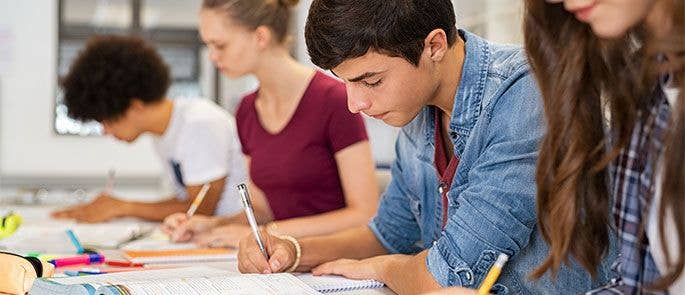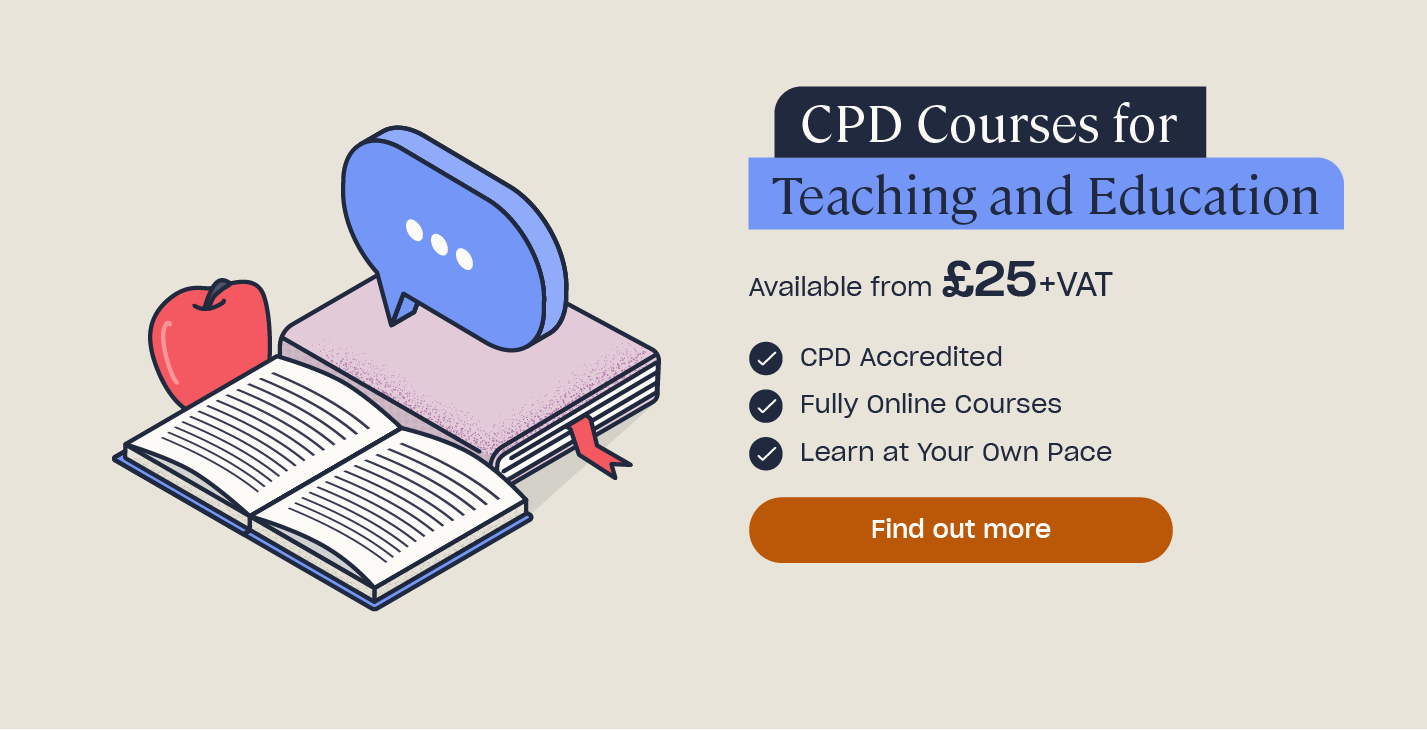8 Teaching Methods to Use in the Classroom
There aren’t many things more powerful than education; it helps to unlock opportunities and futures for people that otherwise may have been inaccessible. This is why teachers are some of the most important members of society.
But with no two students being the same, how can teachers ensure that they’re providing every child with an equal opportunity to learn? The answer lies in utilising a number of different teaching methods to maximise the learning experience for everyone.
In this article, will will delve into what teaching methods are and why they’re so important for teachers of any level of experience, as well as providing a range of potential teaching methods for you to experiment with in your classroom.
What are Teaching Methods?
The term teaching method refers to the techniques, principles, and strategies that educators use to enable and expedite the learning process for their students in the most engaging and memorable way. They help to ensure that learning material is delivered clearly and concisely, is interesting to students, and can be retained well into the future.
Your choice of teaching methods as a teacher will usually depend on what best suits you and your students needs, for example:
- Your personal preferences and background as a teacher.
- What environment you’re teaching in.
- Your school mission statement.
- The requirements of your individual students.
- The overall learning outcome.

Used correctly, teaching methods can help to facilitate the social and emotional development of children as well as their academic ability. They help to prepare students for real-life situations beyond the classroom, and can instil core values that carry through to all aspects of a child’s future life and career.
Furthermore, teaching methods help to ensure your classroom remains inclusive, providing all students with the opportunity to meet classroom expectations.
You can learn more about how to cater to each of your pupil’s individual needs in our article on What is Adaptive Teaching?
Types of Teaching Methods
There are many specific examples of teaching methods available, but these can generally always be placed into one of two categories: Teacher-centred and student-centred approaches. A good educator will use a combination of both of these.
Teacher-centred
Teacher-centred methods are more traditional and focus on positioning the teacher as the main authority figure and expert whose job is to pass on their knowledge to their novice students in a passive way. In a teacher-centred classroom, the focus is primarily on the educator, who always chooses the topics of learning and is solely responsible for answering student questions and evaluating their performance. Often, students work independently in a teacher-focused classroom and the emphasis is on them listening whilst the educator talks. Frequent methods used in a teacher-led approach may include:
- Lectures.
- Direct instruction, in which a teacher explicitly explains a concept.
- Modelling, in which a teacher demonstrates what a student’s work should look like.
- Questioning, to monitor student’s understanding and correct misconceptions.
- Assessments and quizzes.
- Drilling, in which a teacher will use call and response or repeated practice to support memorisation of material.

Child-centred
Conversely to teacher-led approaches, child-centred teaching emphasises the student’s role in the learning process. Whilst the teacher is still the authority figure, they act as more of a facilitator whilst children are encouraged to take a collaborative position in their own learning. This involves the students being given more agency over what they learn, how they learn it, and where this learning occurs.
Often, there will be more discussion between a teacher and their students, children may work in pairs or groups more frequently, have the opportunity to review their own or their peer’s work, and can attempt to answer each other’s queries. Ultimately, children are left to discover and fathom learning material themself or between each other with a teacher only stepping in to correct or feed back when questions arise. Frequent methods used in a child-centred approach may include:
- Enquiry-based learning, where students are provided with the tools needed to discover information for themself.
- Questioning focused on critical thinking, in which students are asked to analyse or evaluate, rather than merely recall, information.
- Role play.
- Outdoor-based learning.
- Pair and group work.
- Project-based learning.
The methods you choose to use play a large part in how effective your teaching is. Using a combination of these two categories of teaching methods is the most guaranteed way to cover all bases in your classroom, and therefore lead to the best student outcome.
To learn more about effective teaching and what other factors play a part in this crucial area of professional development, read our article on What is Effective Teaching?
Benefits of Teaching Methods
As previously mentioned, using a variety of methods helps to make your teaching more effective, engaging, and inclusive. Whilst these are some of the broad benefits of switching up your approaches to teaching, there are a number of proven specific advantages to experimenting with various teaching methods too:
Provides Differentiated Instruction
Each and every student you teach will learn in slightly different ways and at their own pace. The most commonly known example of this is the difference between visual, auditory and kinesthetic learners. As a result, a one-size fits all approach to teaching won’t work for many of your students. Using a mixture of teaching strategies helps to accommodate everyone’s unique learning styles and ensures that every child has an equal opportunity to engage with and understand the learning material.
Increases Motivation
Varying your style of teaching at periodic intervals will help to capture and maintain student’s interest in your lessons. No matter how fascinating the material is, if it is always delivered in the same way students will eventually disengage. Trying a new form of delivering your educational content is a great way to motivate your students to focus on what’s being taught and want to delve deeper into the topic.

Promotes Flexibility and Adaptability
Sometimes delivering a lesson doesn’t go as seamlessly as planned or intended. Your students may not comprehend what you’re teaching as easily as you’d hoped, they may appear disinterested, or perhaps the class size and dynamic is different to usual. In these situations, being able to switch strategy to deliver the content in a more successful manner is a vital tool to have up your sleeve.
Ensures Thorough Assessment and Feedback
As well as using various methods of teaching to deliver your lessons, it can also be beneficial to incorporate a diverse range of assessment styles too. By assessing students in various ways, teachers can gain a more in-depth insight into their level of understanding and progress by viewing this from different angles. This will help you to identify where further learning is required and feed this back to pupils.
Furthermore, using a variety of assessment styles helps to ensure every child’s strengths are being met. Not every student will thrive under traditional assessment formats, so giving them the opportunity to demonstrate their knowledge in a variety of ways produces a more fair and inclusive evaluation of abilities.
Builds Class Relationships and Trust
Utilising different teaching methods can go a long way to building a strong relationship between you and your students. Demonstrating that you know your pupils as individuals, understand their strengths and cater to these, is one of the best ways to gain their respect – the foundation of a good student-teacher bond.
Additionally, delivering your educational content in multiple ways will usually increase student voice, allowing children to contribute and have more of a say over their education. This is also a key way to strengthen your relationship with your students.
You can discover more benefits of promoting student contribution in our article on 5 Ways to Maximise Pupil Voice.
Want to Dive Deeper?
Our comprehensive range of CPD Courses for Teaching and Education are designed by industry experts to help you stay compliant and develop your skills. Extend your knowledge of teaching methods with our Challenging Behaviour Training or Special Educational Needs and Disabilities (SEND) in the Classroom.
Examples of Teaching Methods
Whilst there are many different methods a teacher can use in the classroom, the majority of these are similar in purpose and aim to enhance the learning experience for students. It’s important to remember that a combination of various methods is the best way to guarantee your teaching is effective. Here are 8 popular approaches to consider implementing in your classroom.
Technology-based Learning
Category of teaching method: Teacher and student led.
Also known as e-learning, technology-based learning is any form of learning process that incorporates technology. This could be through online classes, multimedia presentations, or using educational software on computers or tablets. This method can either be teacher-led, where an educator utilises technology to present information to their students, or student-led if a class is encouraged to use technology to seek information for themselves.
Project-based Learning
Category of teaching method: Student-led.
Project-based learning involves students working on a task over an extended period of time to achieve a learning outcome. Often, these projects span multiple different subjects so draw on their knowledge of multiple disciplines in order to be completed. Thus, they usually require a student-led approach where children use critical thinking skills to arrive at conclusions themself and work collaboratively in order to do so.

Kinaesthetic Learning
Category of teaching method: Teacher and student led.
This form of teaching method involves including any form of physical activity and movement into the learning process. This can take many forms, from using props such as building blocks to demonstrate a concept to role-playing or acting out scenarios. Whilst this can be a teacher-led method in which a class is encouraged to copy activity that a teacher is demonstrating, it also has many opportunities for a student-led approach too.
As role-play is a key form of kinaesthetic learning, you may want to discover more on this topic in our article on Benefits of Role Play in Early Years: Advice for Teachers.
Game-based Learning
Category of teaching method: Student-led.
Game-based learning, as suggested by its name, is a form of teaching method which involves the use of games, either digital or non-digital, to complement and enforce learning material. This teaching strategy is highly effective in increasing engagement and motivation and can apply to a wide range of subjects. As it is naturally a highly interactive style of teaching, game-based learning is usually student-centred.
Expeditionary Learning
Category of teaching method: Student-led.
One of the most student-led forms of teaching methods is expeditionary learning, which focuses on learning through experience and exploration. Often, this involves taking children out of a classroom and out into the real world where they can learn in a hands-on manner that’s relevant to their lives beyond school. One of the benefits of this teaching style is that it encourages character development and maturation in addition to academic progress.

Individual Learning
Category of teaching method: Teacher-led.
Individual learning is the process of catering educational material to specific student’s learning pace and style. In this method, a teacher may provide children with their own personalised action plans or learning objectives. Thus, it involves a teacher having a clear understanding of the needs of each of their students.
Group Learning
Category of teaching method: Student-led.
Also known as collaborative learning, group learning is a type of teaching method that hones in on social interaction and cooperation between students. In this strategy, children work together in pairs or small groups to complete projects and solve problems. The idea behind this method is that students are able to learn from each other and can take an active role in their own education. In addition, it also helps to foster a strong sense of community and teamwork within the classroom.
Problem-based Learning
Category of teaching method: Student-led.
Often abbreviated to PBL, problem-based learning is a teaching strategy which focuses on real-world problems. Often in groups, students will be given the opportunity to identify and analyse complex yet practical issues relating to the real world and be asked to develop solutions to these using problem-solving and critical thinking skills. PBL can cover multiple academic subjects and, as it relates to real life, can provide a deeper and more applicable understanding of the subject matter than ordinary teaching styles.

Teaching is a dynamic process and therefore requires a multitude of methods in order to meet the diverse needs of students and keep them engaged. Whether you’re a seasoned educator or just beginning your career, knowing and utilising a variety of approaches when teaching can be of great benefit to both you and your pupils. Drawing from elements of both teacher-led and student-centred methods will help to ensure your teaching remains effective, inclusive, and memorable for all students.
Further Resources:
- What is Effective Teaching?
- How to Create a Positive Learning Environment
- What is Adaptive Teaching?
- 5 Ways to Maximise Pupil Voice
- Benefits of Role Play in Early Years: Advice for Teachers
- What is Active Learning?
- What is Ability Grouping in Education?
- What is the Problem-Solving Method of Teaching?
- How to Teach with Confidence
- What is Mixed Ability Grouping in Education











